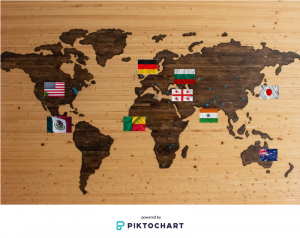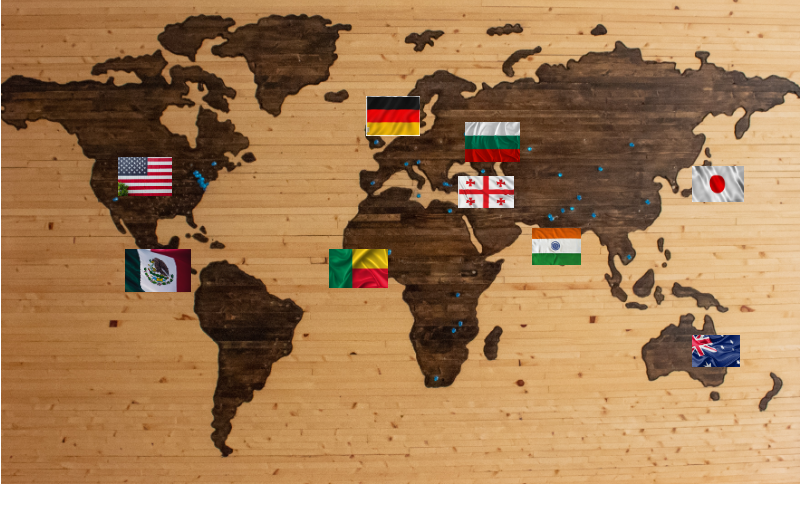What Can We Afford to Lose?
When considering what musical selections to include on my 10-track abridged version of the Golden Record, I was encouraged to use Abby Smith Rumsey’s characterization of digitizing material as a sort of determining compass: Of these 27 tracks, which one’s can we afford to lose? Which ones have long-term value? How can we distinguish these tracks from ‘noise’ and ‘signal’?
Consequently, this begs the question of what considerations need to be made with respect to developing a criteria that can assist in determining what exactly it is we can afford to lose in this endeavour. Smith Rumsey’s article Why Digitize delves briefly into some of the iterations of criteria that already exist in regard to digitizing certain materials. There is one element that stands out to me as most relevant for my purposes:
Creation of a “virtual collection” through the flexible integration and synthesis of a variety of formats, or of related materials scattered among many locations (Smith, 1999).
With this in mind, I set out to apply this criteria and curate 10 tracks that incorporated a variety of forms (manifested through instruments, vocals, genres, or a combination of multiple elements) and representative of a variety of locations. It was difficult, but I also thought it pertinent to eliminate any specific cultural, ethnic, or social significance to any music track partly due to the fact that if any intelligent life were to stumble upon these sounds, they would presumably be unaware of those underlying factors.
CLASSICAL MUSIC
| LOCATION | TITLE | ARTIST | PERFORMED BY |
| Germany / United Kingdom | Symphony No. 5 in C Minor, Opus 67: I. Allegro Con Brio
1808 |
Ludwig van Beethoven | Philharmonia Orchestra, conducted by Otto Klemperer |
| India | Bhairavi: Jaat Kahan Ho
12th Century |
Hindustani Classical Music (shastriya sangeet) | Kesarbai Kerkar (vocals) with harmonium, Tanpura and tabla accompaniment |
There are a total of seven Classical/ Baroque style tracks on the Golden Record. I felt it was important to have some representation in my ten. Symphony No. 5 by Beethoven is perhaps one of the most familiar pieces of music of all time. My partner said it was “planet earth’s theme song” and that was a convincing enough argument for me. But truly, Symphony No. 5 appeals to the “synthesis of a variety of forms” criteria as it incorporates a diversity of instruments like woodwinds, brass, percussion, and strings. Similarly, Jaat Kahan Ho utilizes a harmonium and tabla, but more importantly, it contrasts ‘European’ classical music with “Asiatic” Hindustani Classical Music. Ultimately, our extraterrestrial brothers and sisters will presumably be able to enrich their understanding to study these images in new contexts (Smith, 1999).
“MODERN” BAND MUSIC
| LOCATION | TITLE & DATE | ARTIST | PERFORMED BY |
| United States | Johnny B. Goode
1958 |
Chuck Berry | Chuck Berry (vocals, guitar) with Lafayette Leak (piano), Willie Dixon (bass), and Fred Below (drums) |
| United States | Melancholy Blues
1927 |
Marty Bloom and Walter Melrose | Louis Armstrong and His Hot Seven |
| Mexico | El Cascabel (The Little Bell)
1957 |
Lorenzo Barcelata | Antonio Maciel and Los Aguilillas with Mariachi México de Pepe Villa/Rafael Carrión (conductor) |
North America is well represented in the “Modern” (I use this term incredibly loosely) Band Style Music category. I grouped these tracks together primarily because they embodied the most recent forms of music on the Golden Record, and thus I considered them modern (?). Consequently, these songs all require fewer individuals with fewer instruments when compared to the likes of a symphony for instance, which is why I distinguished this category with ‘band’. I felt that these tracks best represented three distinct genres of music: jazz, rock, and mariachi, all of which employ a variety of novel instruments.
FOLK MUSIC
| LOCATION | TITLE & DATE | ARTIST | PERFORMED BY |
| Georgia | Chakrulo
8th Century |
Georgian Polyphonic Choral | Georgian State Merited Ensemble of Folk Song and Dance/Anzor Kavsadze (director) featuring Ilia Zakaidze (first tenor) and Rostom Saginashvili (second tenor) |
| Bulgaria | Izlel ye Delyo Haydutin
17th Century |
Bulgarian Folk Song | Valya Balkanska (vocal), Lazar Kanevski, and Stephan Zahmanov (kaba gaidi – Bagpipes) |
| Australia | Barnumbirr (Morning Star) and Moikoi Song
1962 (recorded) |
Australian Indigenous Song | Tom Djawa (clapsticks), Mudpo (digeridoo), and Waliparu (vocals) |
| Benin | Cengunmé
1963 (recorded) |
Traditional African Music | Mahi musicians of Benin |
Perhaps the most difficult category to curate was the Folk Music category – There are 14 tracks on the Golden Record considered as folk music, so it was only natural that this category be the largest. I felt it necessary for Australian Indigenous music to be included on here, principally due to the unique sounds it creates and it’s nativity to Australia. These same reasons can be applied to Cengunmé as it is an almost completely percussive song and Izlel ye Delyo Haydutin because of its distinctive mix of vocals and bagpipes. Finally, there is just something beautiful about the polyphonic choral arrangement of Chakrulo that just hits different.
INSTRUMENTAL MUSIC
| LOCATION | TITLE & DATE | ARTIST | PERFORMED BY |
| Japan | Sokaku-Reibo (Depicting The Cranes In Their Nest)
18th Century |
Arranged by Kinko Kurosawa | Goro Yamaguchi (shakuhachi – bamboo flute) |
The final category is one I characterized as “Instrumental”, particularly because there is a singular instrument and artist. I thought this song was reflective of a different Asiatic influence, and while most, if not all, of the above songs incorporated a number of different musical elements, this song was singular in its approach (bamboo flute).

Smith Rumsey, A. (1999, February). Why Digitize? Retrieved June 15, 2019, from Council on Library and Information Resources: https://www.clir.org/pubs/reports/pub80-smith/pub80-2/
Smith, Rumsey, A. (2017) Digital Memory: What Can We Afford to Lose
